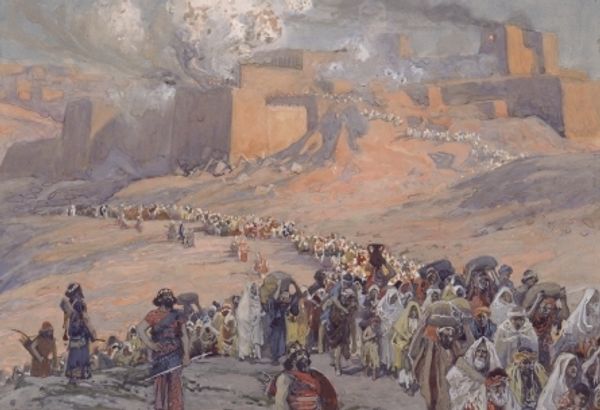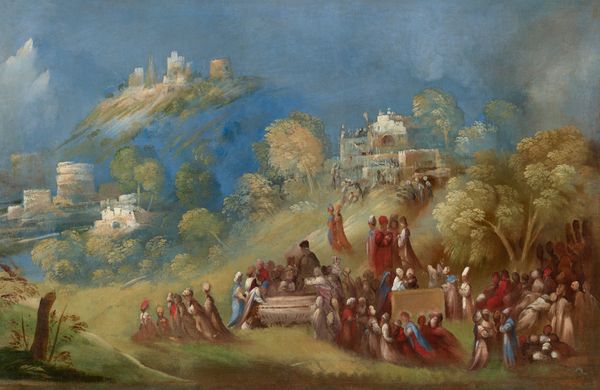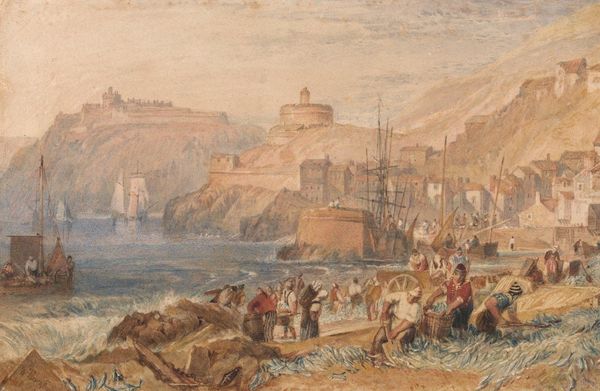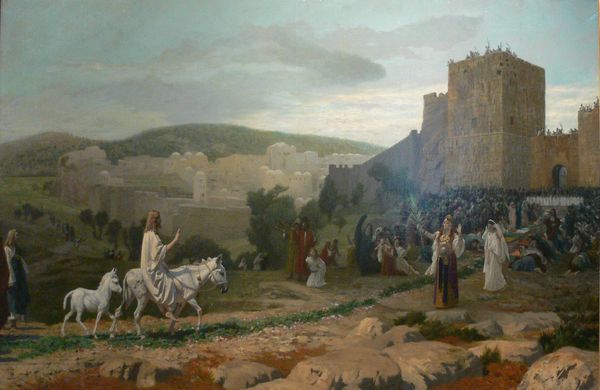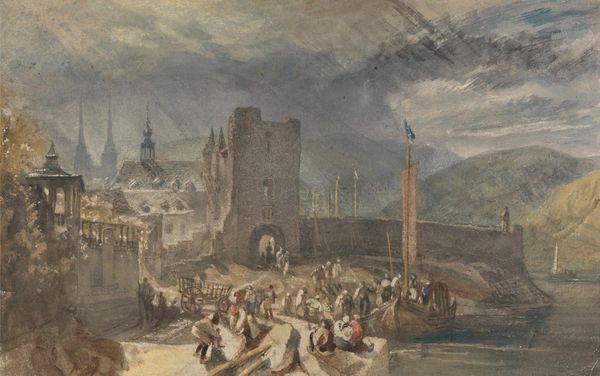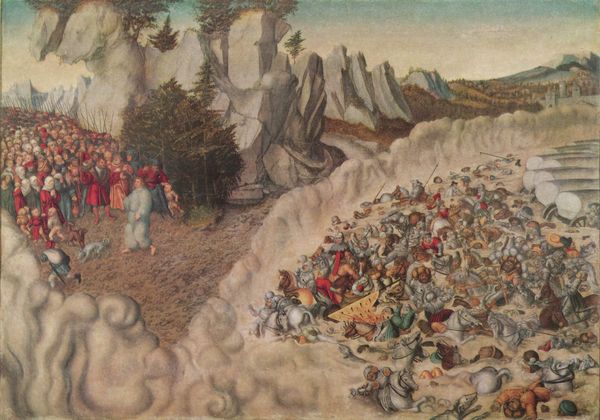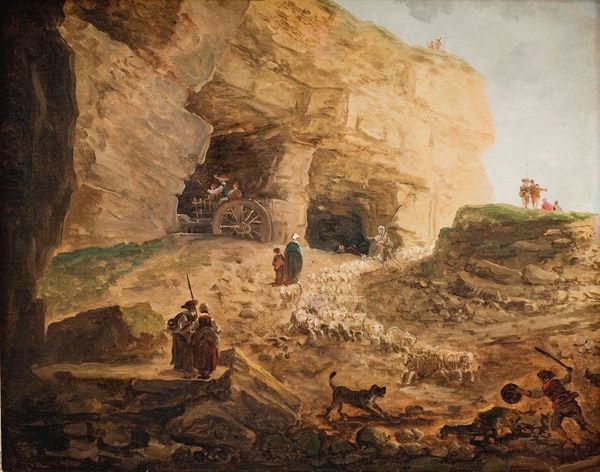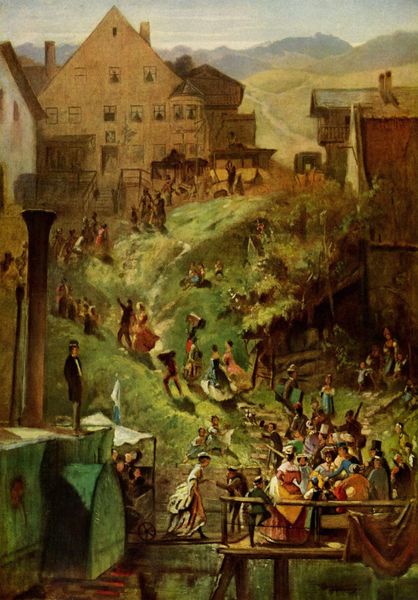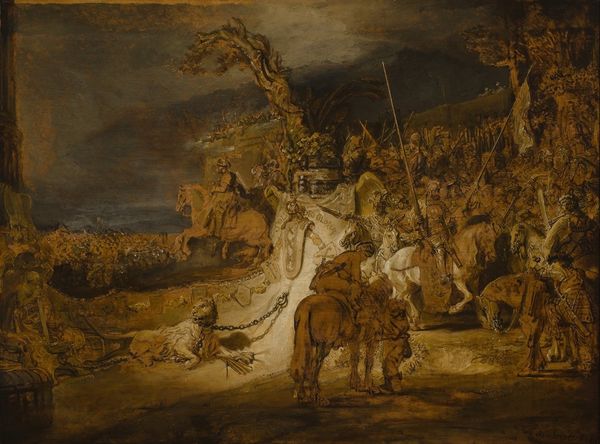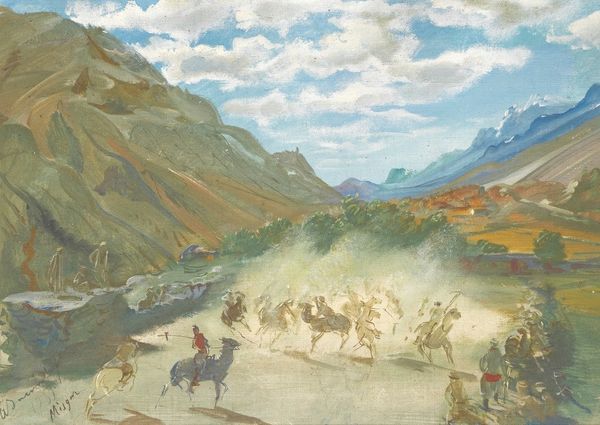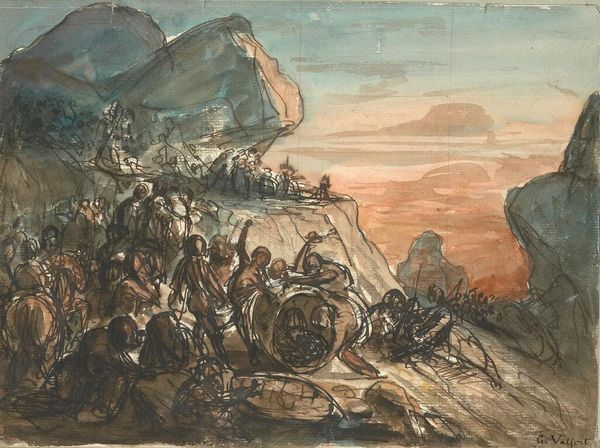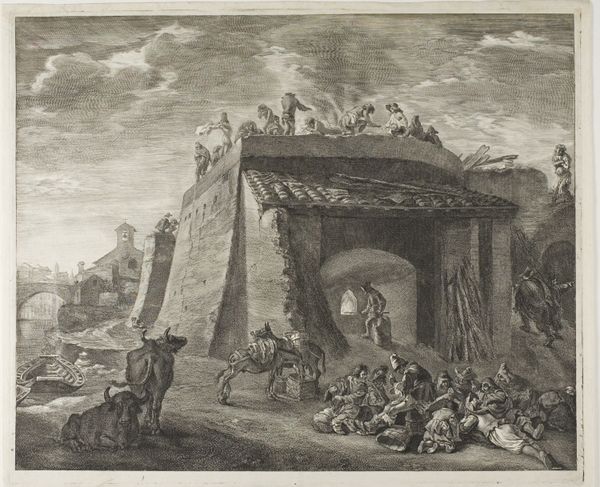
Copyright: Public Domain: Artvee
Curator: This is J.M.W. Turner's watercolor, "Saint Catherine’s Hill, Guildford, Surrey," created around 1830. It captures a bustling fair. Editor: It's an interesting contrast to Turner’s marine paintings, less about nature's sublime power and more focused on social happenings, a real material scene playing out! The muted watercolor tones create a very dreamlike vision of a working landscape. Curator: Indeed. Turner's market scenes were often commissioned works or studies. Consider the broader context of early 19th-century England, a period of rapid industrialization alongside traditional fairs, now commodified entertainment. This hill, traditionally a site of religious pilgrimage, becomes a place of commercial and social exchange. Editor: The painting's real skill lies in capturing this dynamic atmosphere of people in motion. The way he’s used the watercolor reminds me of the labor it must have required of both Turner himself and the community present. Observe how translucent washes build up to define tents, and people…all those layers and controlled pigment are evidence of a skillful method, and also the very real act of painting as work. Curator: The social dynamics interest me—the blurred lines between spectacle and the everyday life of ordinary people are all happening in real-time. Did Turner, as an artist embraced by the elite, participate or critique such events through the lens of art production? It shows that patronage impacted artistic representations of English culture, too. Editor: Precisely. It’s intriguing that the architecture on top of the hill recedes so much in tone in contrast with the action below. What seems clear is that this image represents how structures can define both spiritual ideas, as well as the physical landscape—both become raw materials in his rendering, distilled into color, ground into pigment. Curator: This work, through its depiction of Saint Catherine's Hill, underscores the changing face of England as Turner, along with many artists, navigated a nation on the cusp of modernization. It shows that England as it was known had entered its decline. Editor: Seeing how watercolor yields a social landscape gives fresh nuance, both to how and why it came into being. There are labor dynamics at every step of the image.
Comments
No comments
Be the first to comment and join the conversation on the ultimate creative platform.
